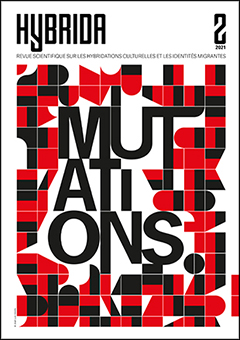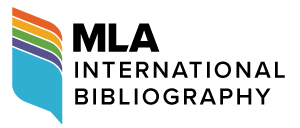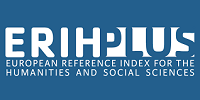The Nothombian scriptural process: a hybrid identity
DOI:
https://doi.org/10.7203/HYBRIDA.2.20637Keywords:
Nothomb, transfictionality, rewriting, intertextuality Abstract
Abstract
This article aims to show the reasons why Amélie Nothomb’s work escapes classification. Amélie Nothomb’s work doesn’t correspond to the previous aesthetic experience because her literary production shows an evolution of it through the crossing of several concepts and several registers. His work is therefore only mutation and hybridization both in its form and in its content. In addition, her literary production reshapes concepts such as that of transfictionality, which creates characteristics and an identity that are unique to Amélie Nothomb.
 Downloads
Downloads
 References
References
Castro, C. (2003). Dans les petits papiers d’Amélie Nothomb. Marie Claire, p. 70.
Constant, I. (2003). Construction hypertextuelle: Attentat d’Amélie Nothomb in The French Review, 76(5), 933-940. https://www.jstor.org/stable/3133231
Creuz, S. (6 septembre 1994). Quand la littérature fait long feu. L’écho, p. 13
Doubrovsky, S. (1977). Fils. Éditions Galillée.
Genette, G. (1982). Palimpsestes. Éditions du Seuil.
Gignoux, A. C. (2006). De l’intertextualité à la récriture. Cahiers de Narratologie, 13, 1-8. https://doi.org/10.4000/narratologie.329
Grall, C. (2007). Littérature, représentation, fiction (pp. 247-266). Honoré Champion.
Hugo, V. (1967). Notre-Dame de Paris. Garnier-Flammarion.
Hugueny-Léger, E. (2015). Naissance et mort de l’auteur : les investigations d’Amélie Nothomb. Itinéraires, 2014/3. https://doi.org/10.4000/itineraires.2571
Jauss, H. R. (1978). Pour une esthétique de la réception. Gallimard.
Jauss, H. R. (1988). Pour une herméneutique littéraire. Gallimard.
Lejeune, Ph. (1996). Le pacte autobiographique. Éditions du Seuil.
Journo, N. (1997). Portrait quasi modeste. Libération. https://www.liberation.fr/livres/1997/10/
09/quasi-modeste_219014/
Nothomb, A. (1992). Hygiène de l’assassin. Albin Michel.
Nothomb, A. (1995). Les Catilinaires. Albin Michel.
Nothomb, A. (1997). Attentat. Albin Michel.
Nothomb, A. (1996). Péplum. Albin Michel.
Nothomb, A. (1997). Attentat. Albin Michel.
Nothomb, A. (1998). Mercure. Albin Michel.
Nothomb, A. (2001). Cosmétique de l’ennemi. Albin Michel.
Nothomb, A. (2002). Robert des noms propres. Albin Michel.
Nothomb, A. (2003). Antéchrista. Albin Michel.
Nothomb, A. (2006). Journal d’hirondelle. Albin Michel.
Nothomb, A. (2008). Le fait du prince. Albin Michel.
Nothomb, A. (2012). Barbe bleue. Albin Michel.
Nothomb, A. (2017). Frappe-toi le cœur. Albin Michel.
Nothomb, A. (2018). Les prénoms épicènes. Albin Michel.
Nothomb, A. (Paris, 2 juillet 2018). Lettre inédite d’Amélie Nothomb à Eolia Verstichel.
Nothomb, A. (2019). Soif. Albin Michel.
Nothomb, A. (2020). Les aérostats. Albin Michel.
Renouvier, Ch. (1876). Uchronie, Esquisse historique apocryphe du développement de la civilisation européenne tel qu’il n’a pas été, tel qu’il aurait pu être. Paris.
Saint-Gelais, R. (2011). Fictions transfuges. La transfictionnalité et ses enjeux. Éditions du Seuil.
Zumkir, M. (2002). Un prénom pour la vie. Le carnet et les instants, 124. https://le-carnet-et-les-instants.net/archives/nothomb-robert-des-noms-propres/
Published
How to Cite
-
Abstract595
-
HTML (Français )67
-
PDF (Français )721
Issue
Section
License
All the documents in the OJS platform are open access and property of their respective authors.
Authors publishing in the journal agree to the following terms:
- Authors keep the rights and guarantee HYBRIDA the right to be the first publication of the document, licensed under a Creative Commons license Attribution-NonCommercial-ShareAlike 4.0 International (CC BY-NC-SA 4.0) that allows others to share the work with an acknowledgement of authorship and publication in the journal.
- Authors are allowed and encouraged to spread their work (once published) through electronic means using personal or institutional websites (institutional open archives, personal websites or professional and academic networks profiles) once the text has been published.

















